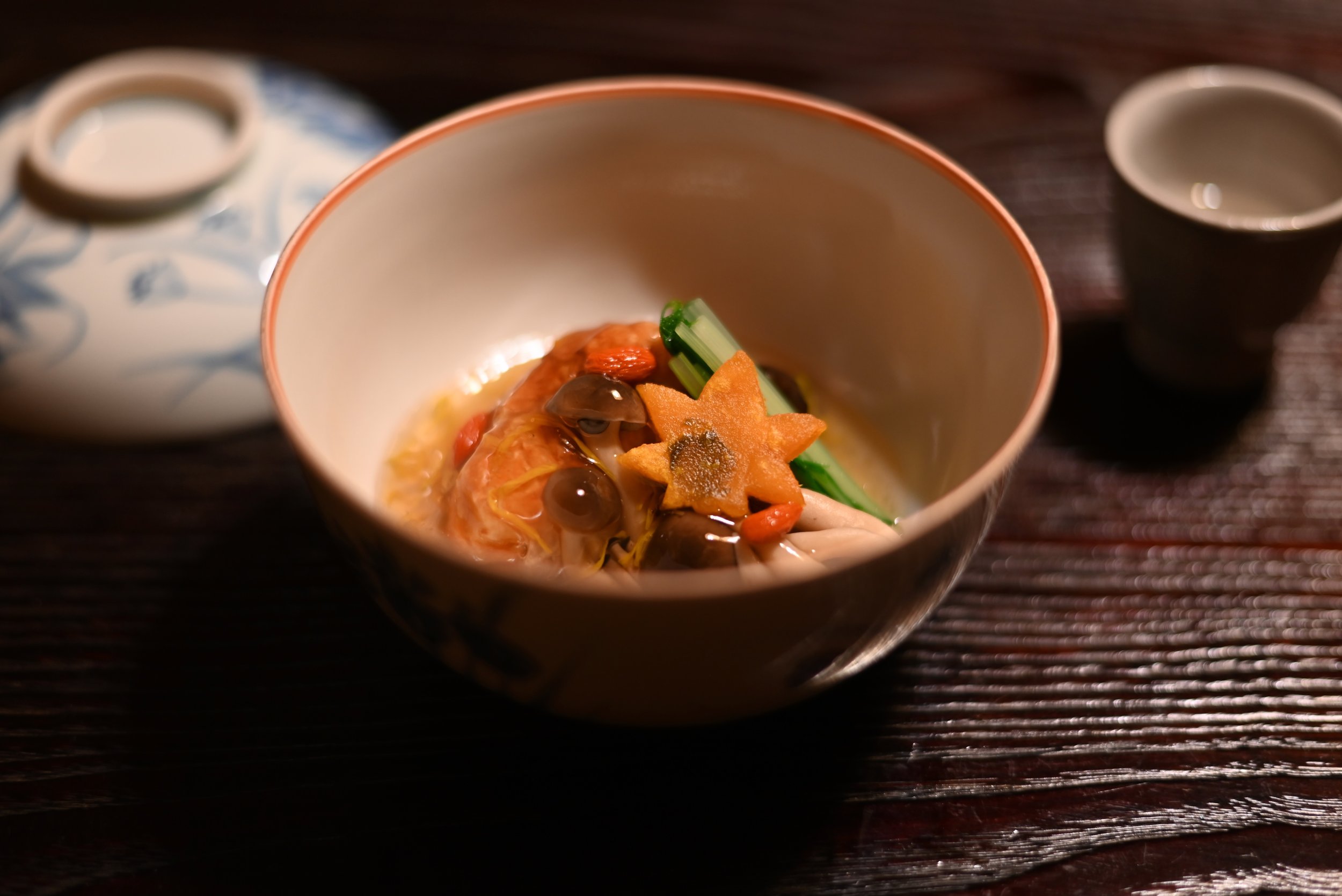
“Un Pen”, a thick, traditional 17th century Chinese Soup made of mushroom, goji berries, sweet potato, and other ingredients. This soup was part of a tasting menu at Bon Taito, a vegan restaurant in Tokyo. Bon Taito specializes in Fucha Ryori, a type of vegetarian cuisine eaten by Zen Buddhist Monks. “Fucha” can mean “a meal eaten which begins and ends with tea, aiming to create friendship and peace among those eating together.”

Theo, my friend Yuki’s border collie. He was born in New Zealand and Yuki is training him to be a national champion. He competed in a muddy field in the rain and came in first place in obedience.

Border collie Theo getting packed for a road trip to Hakone.
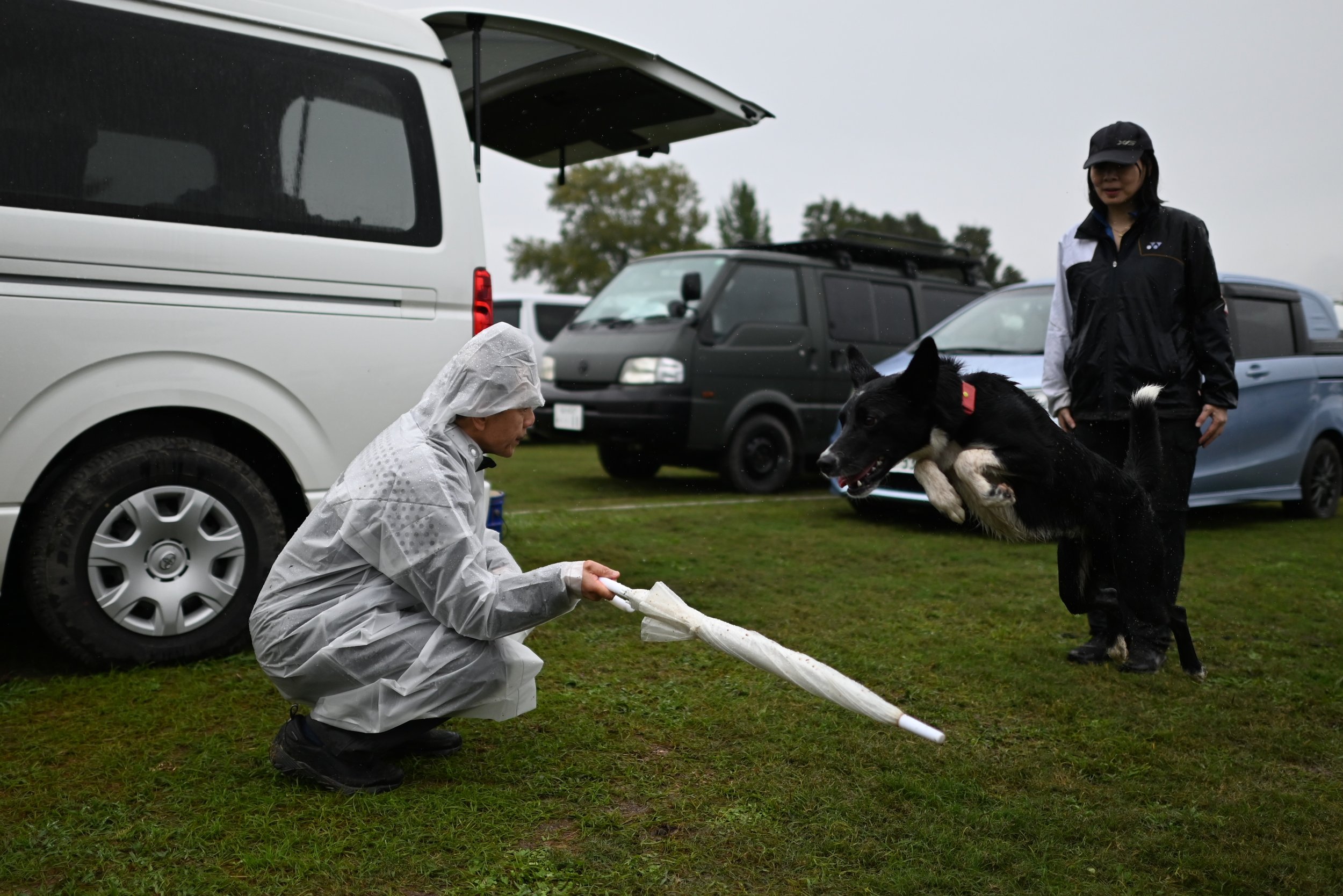
My dad, Danny, helping Theo and Yuki practice for the obedience competition.
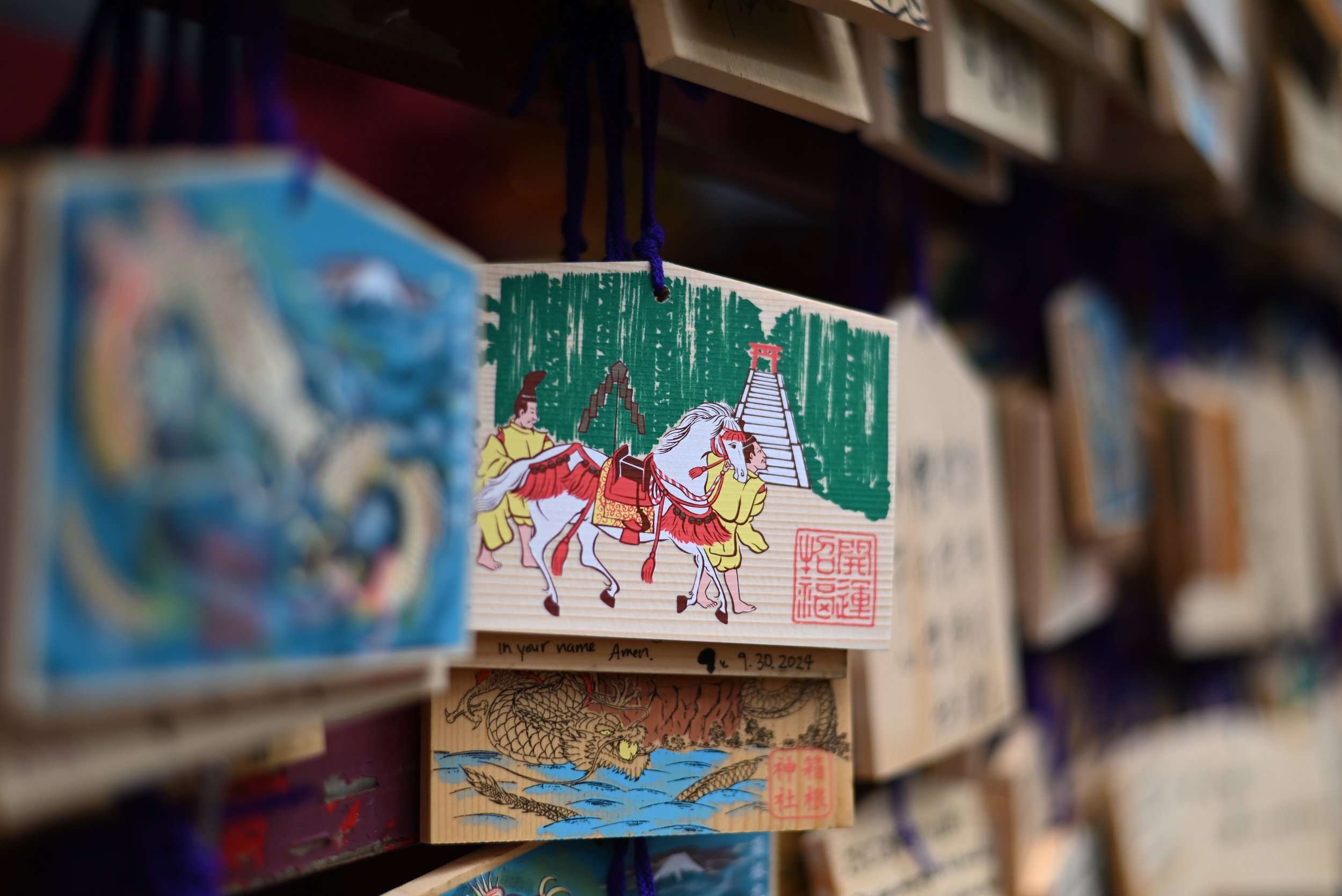
Ema (絵馬), small wooden plaques that have prayers written on them at Shinto and Buddhist shrines in Japan.

Bob, the pug. His parents brought him on the gondola to Mt Komagatake in a stroller.
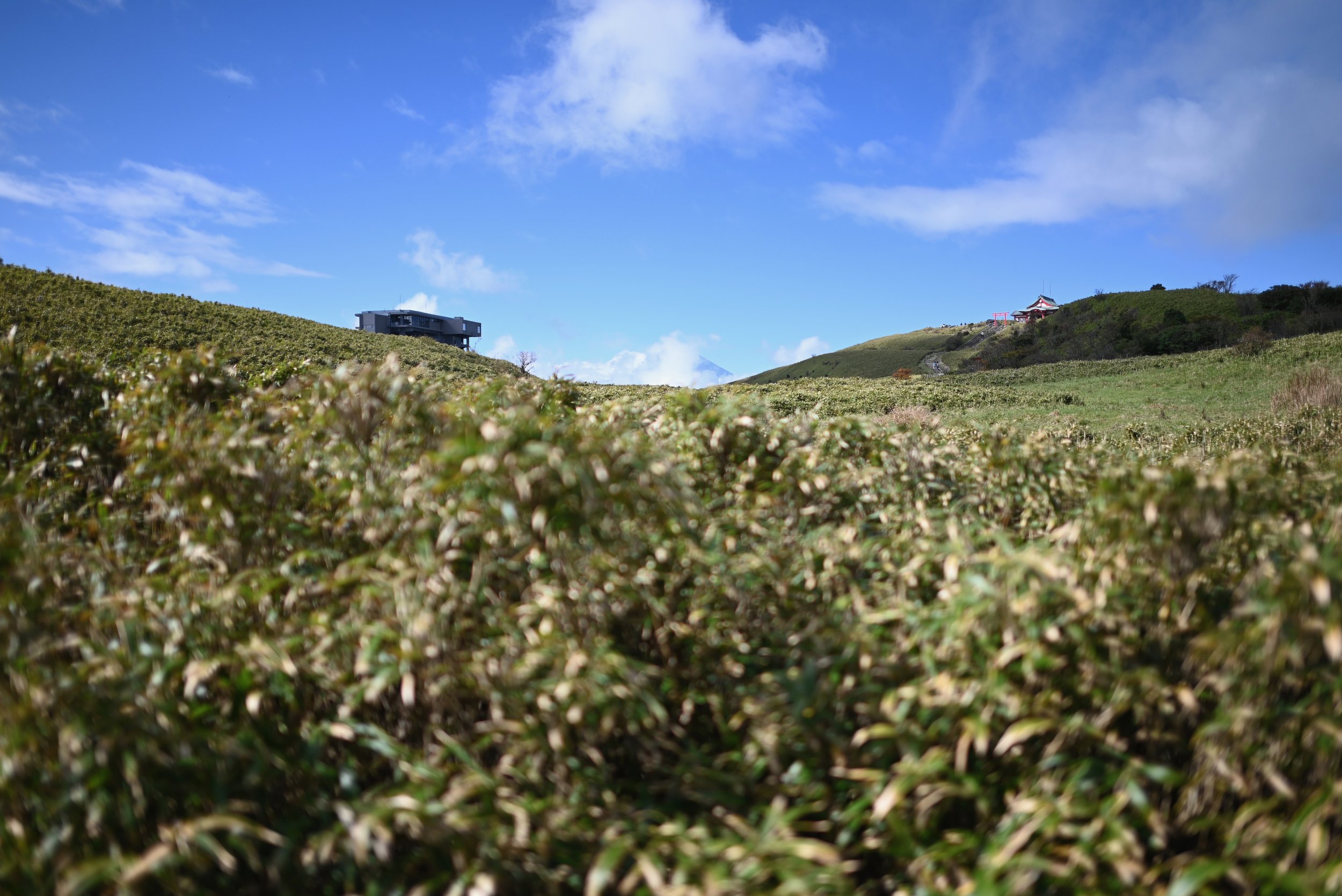
View from the summit of Mount Komagatake. In the valley, between Hakone Mototsumiya Shrine and the gondola station, Mount Fuji began to peak out from behind the clouds.
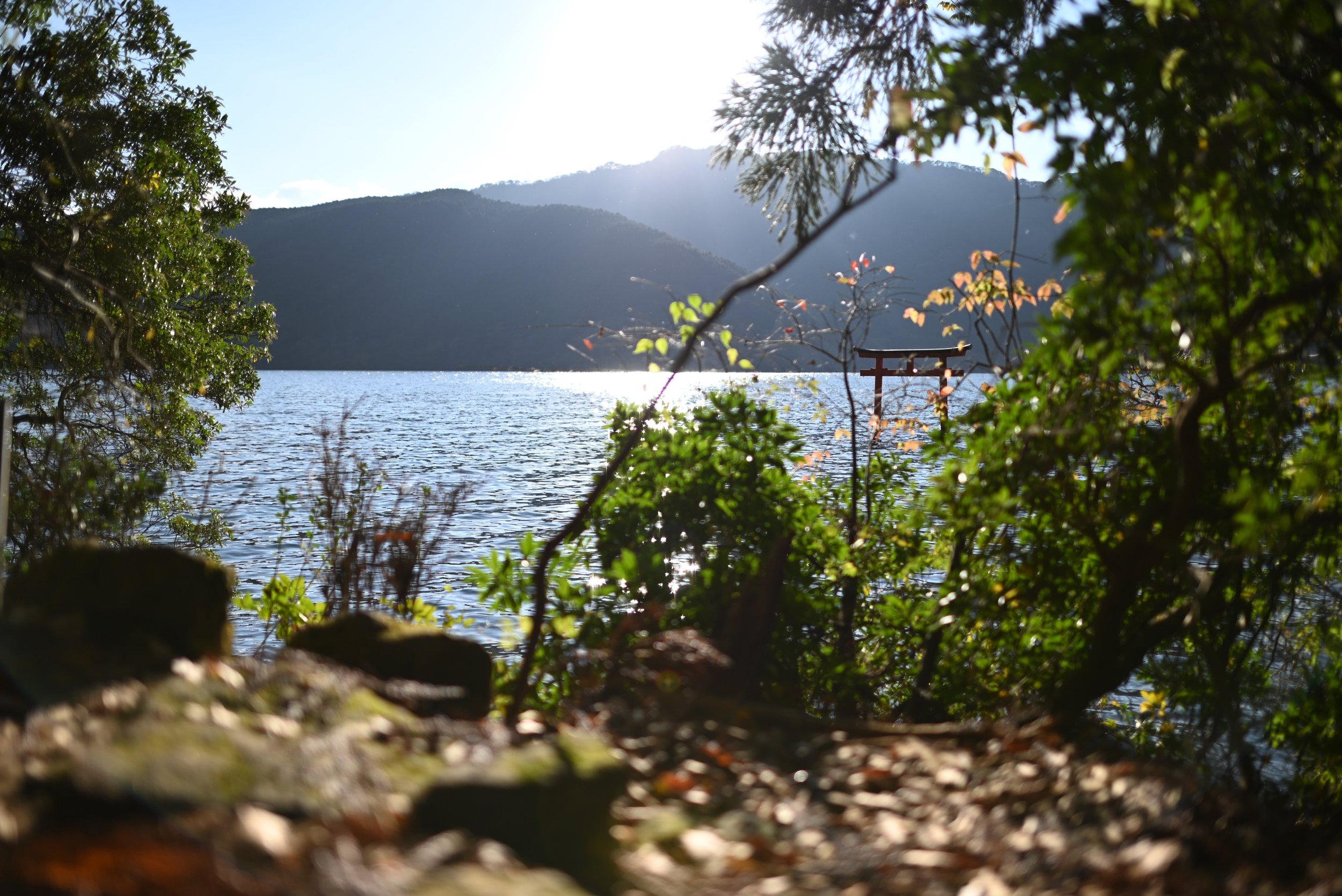
The “red gate of peace” in Ashinoko Lake, Hakone. It is part of the Hakone-jinja shrine, which dates back to 757 and was a frequent spiritual destination for military commanders.
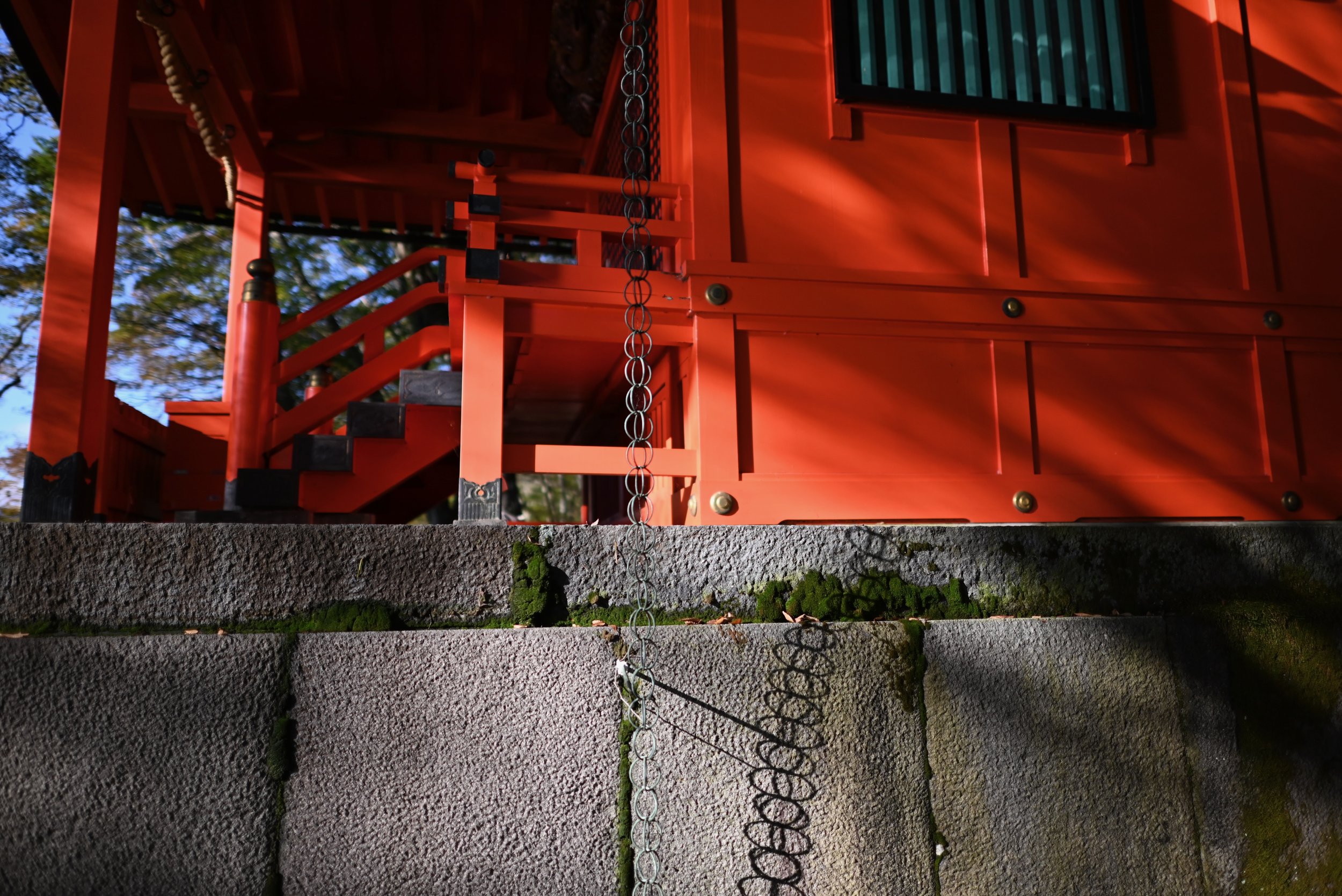
Another part of the Hakone-jinja shrine. Attached to the side of the shrine was a rain chain (鎖樋, kusari-toi), an alternative to a down spout.

View from the staircase of the stained glass tower in the Hakone Open Air Museum. The tower has 480 panels of stained glass.
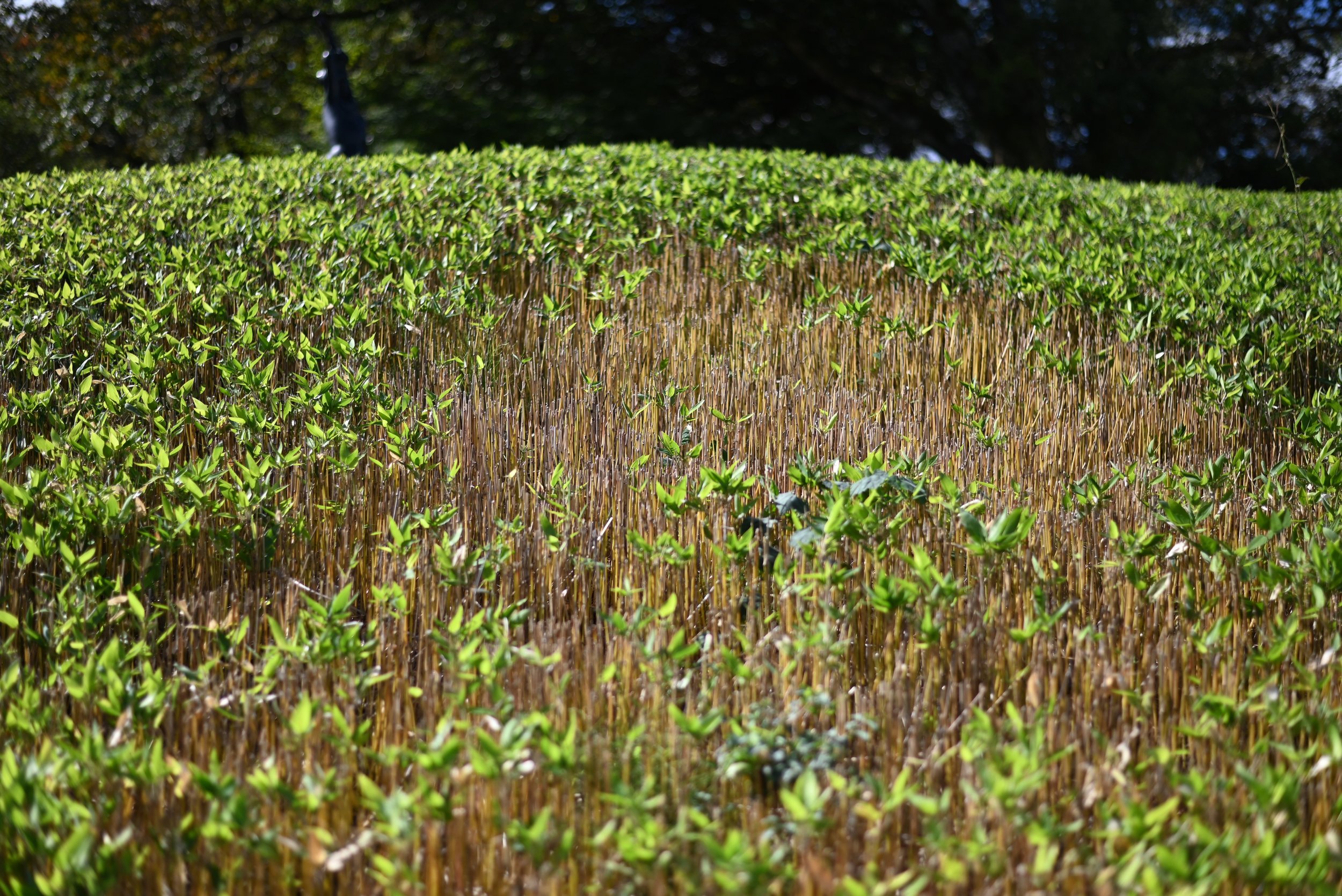
A field in the Hakone Open Air Museum.
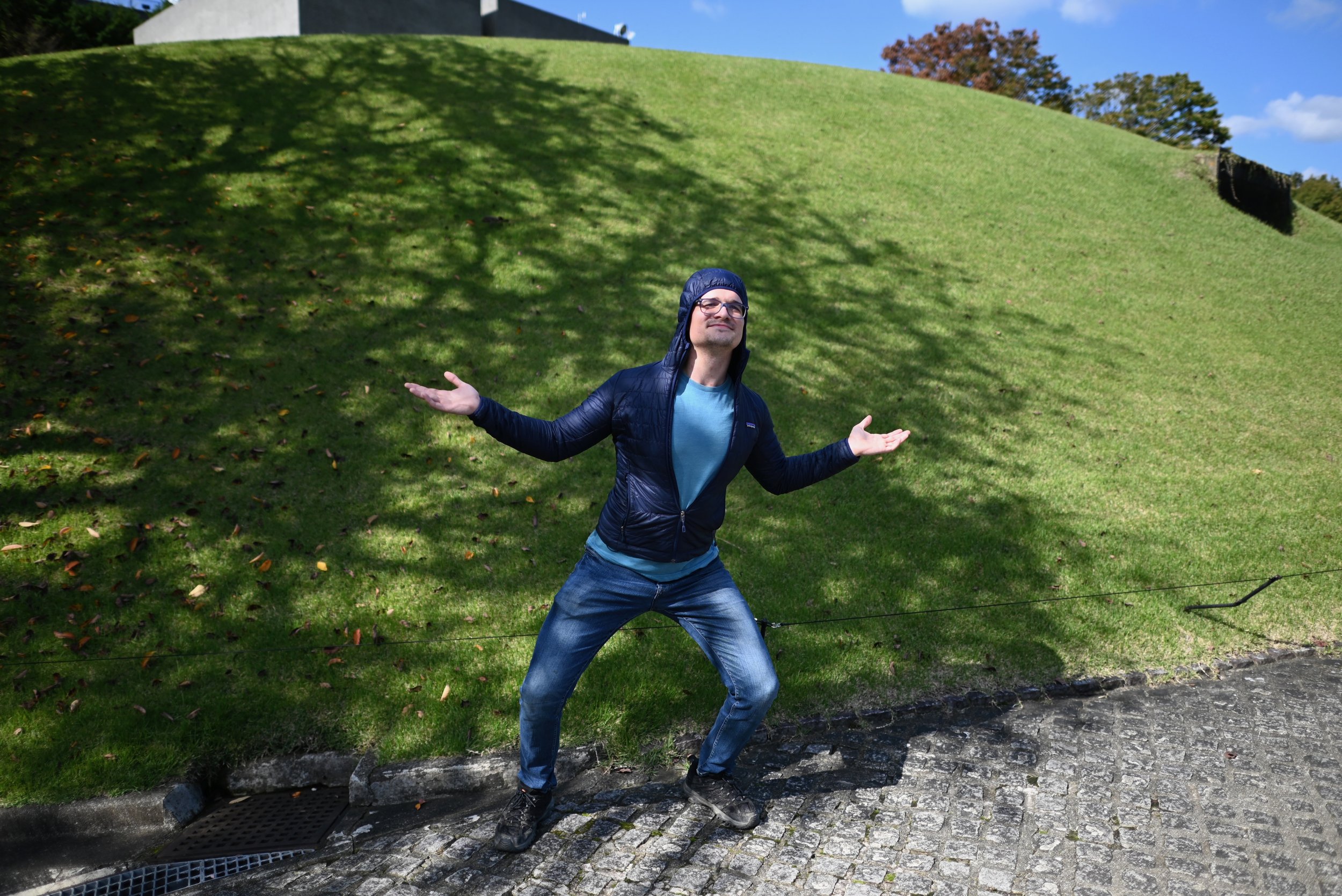
A live artwork in the Hakone Open Air Museum.
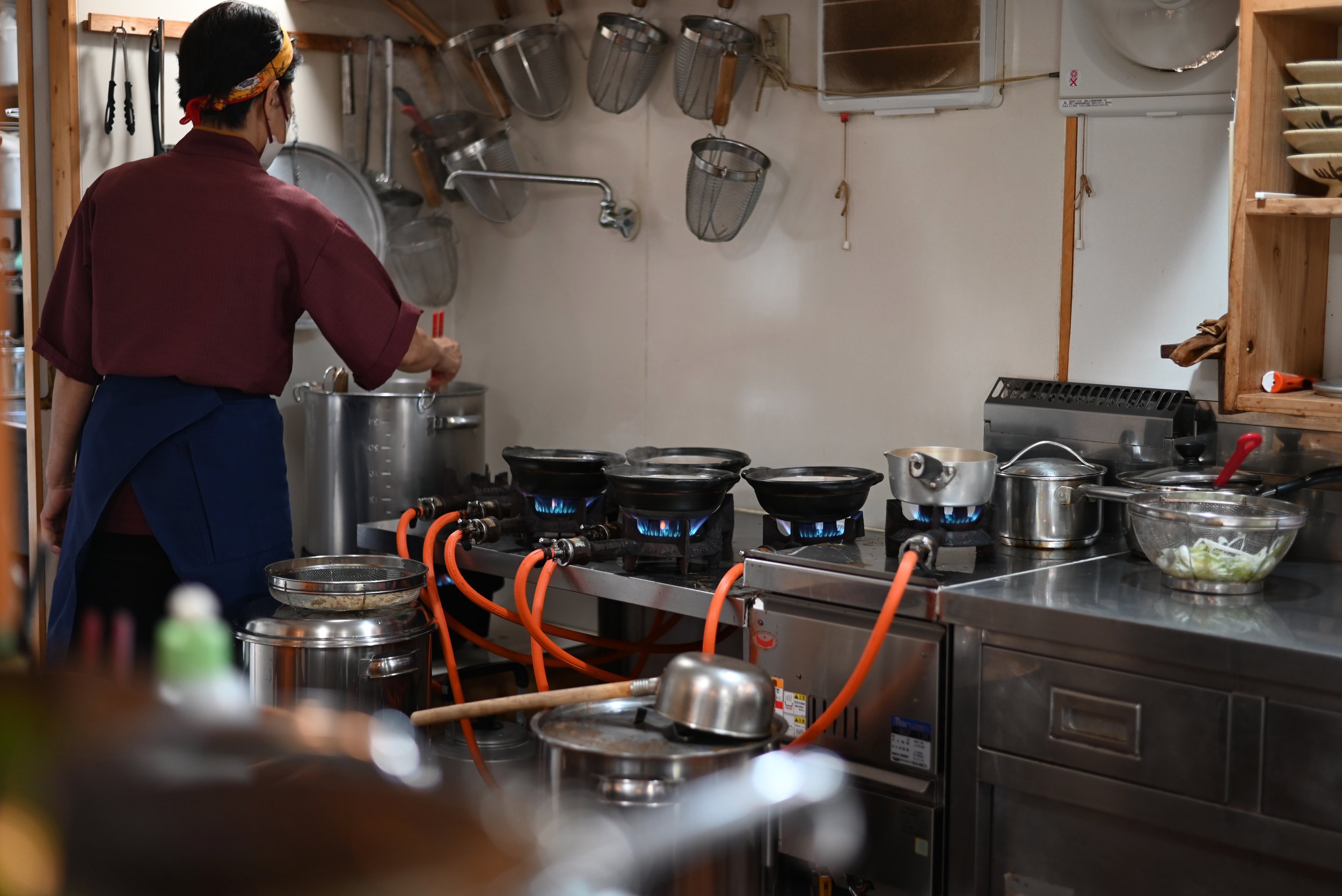
One of the chefs cooking udon (noodles) at an udon restaurant in Hakone (クロウドンヤマチョウセンゴクハラ).
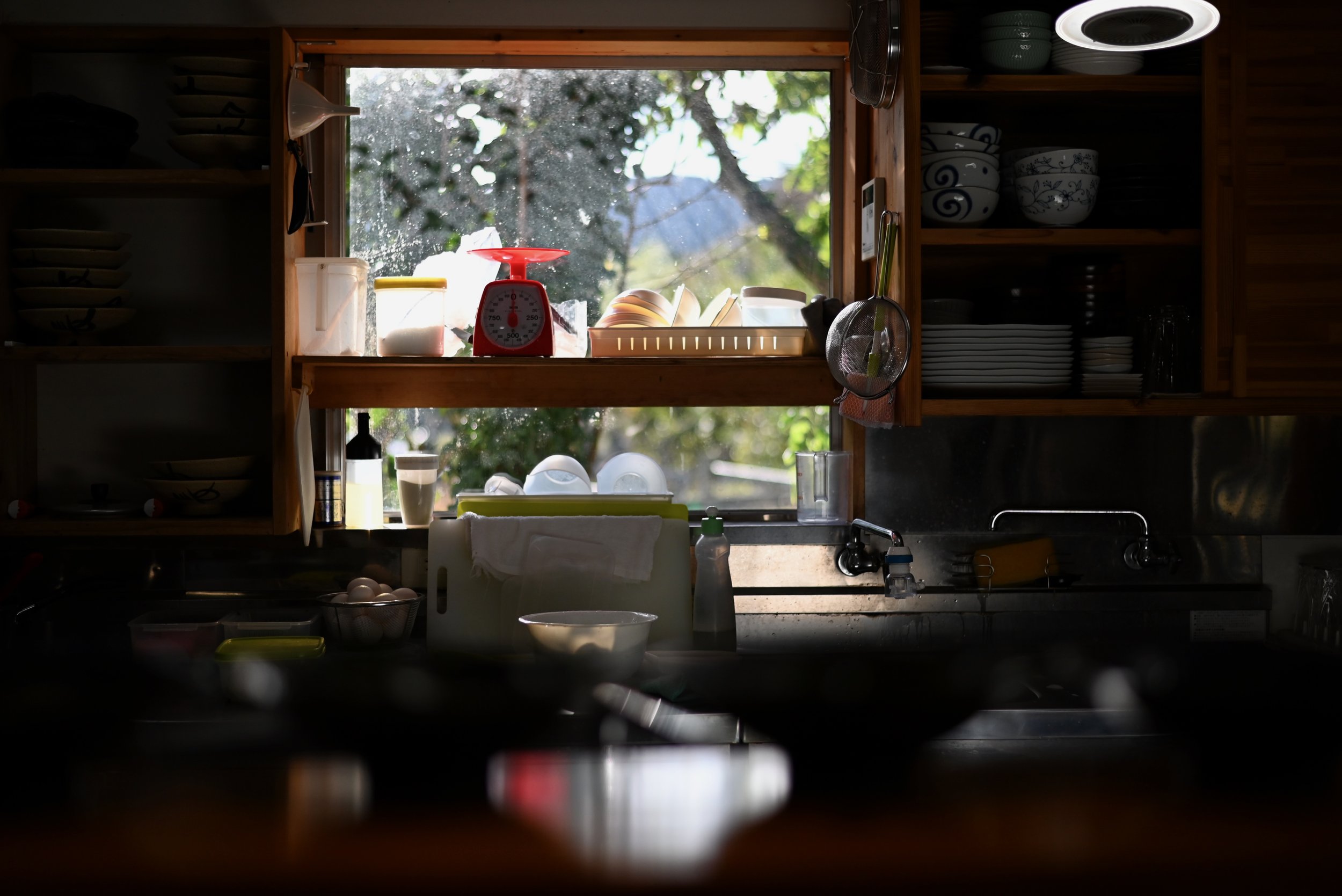
The galley kitchen of an udon restaurant in Hakone (クロウドンヤマチョウセンゴクハラ).
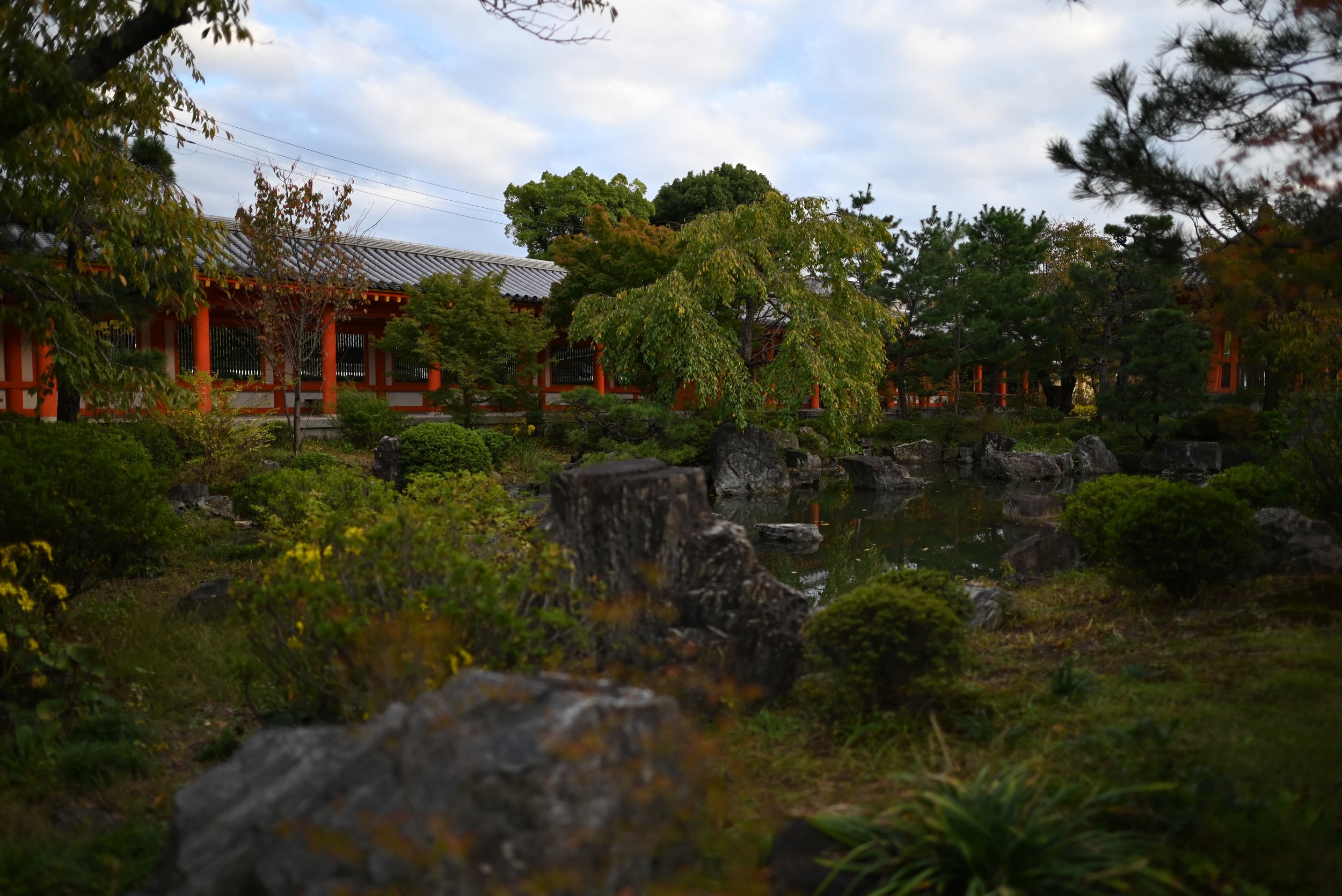
A garden at the Sanjūsangen-dō, a temple in Kyoto famous for is 1,001 statues of the Japanese Buddhist deity Kannon, goddess of reincarnation.
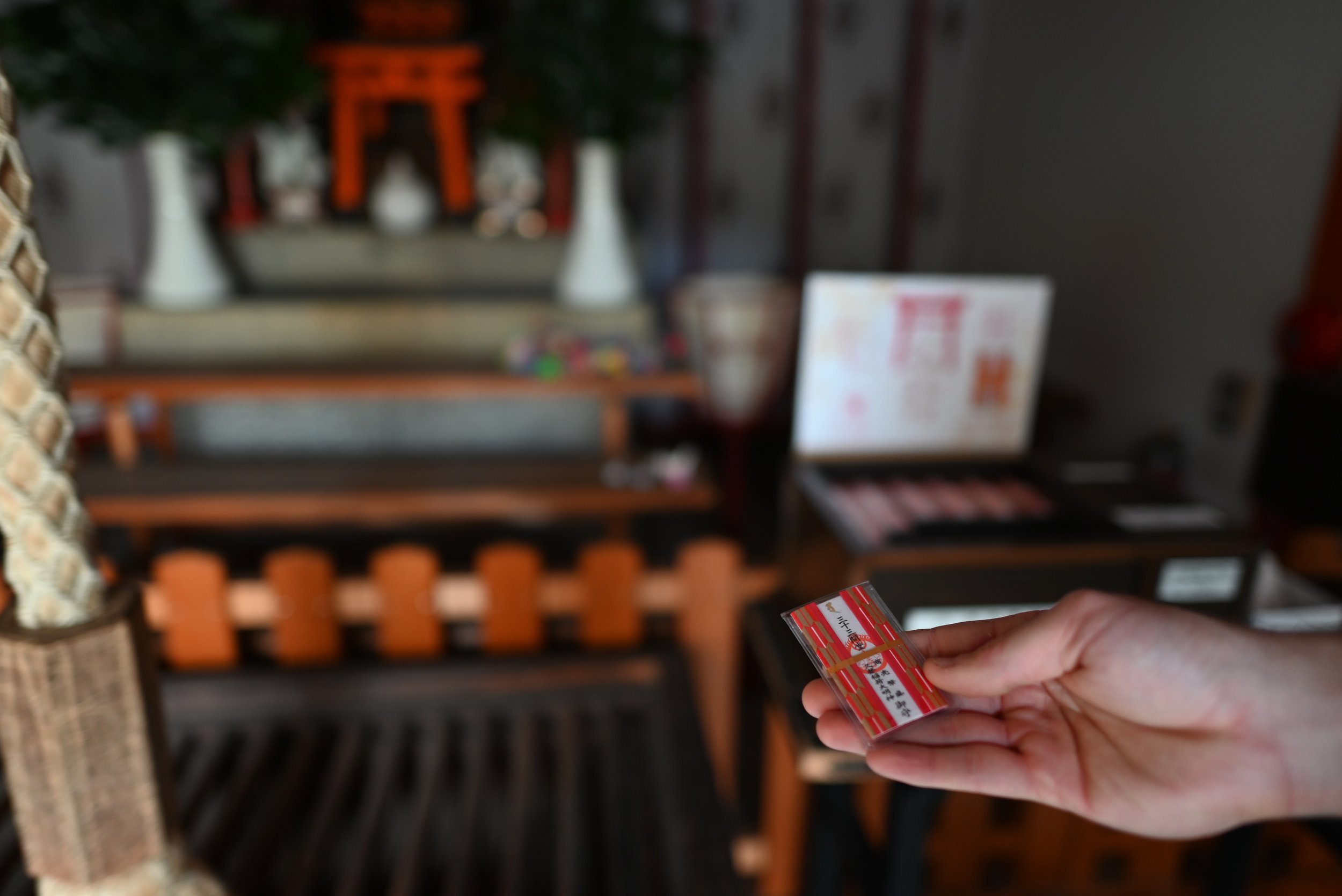
An omamori, or protective amulet, for business prosperity purchased at Sanjusangen-do in Kyoto.
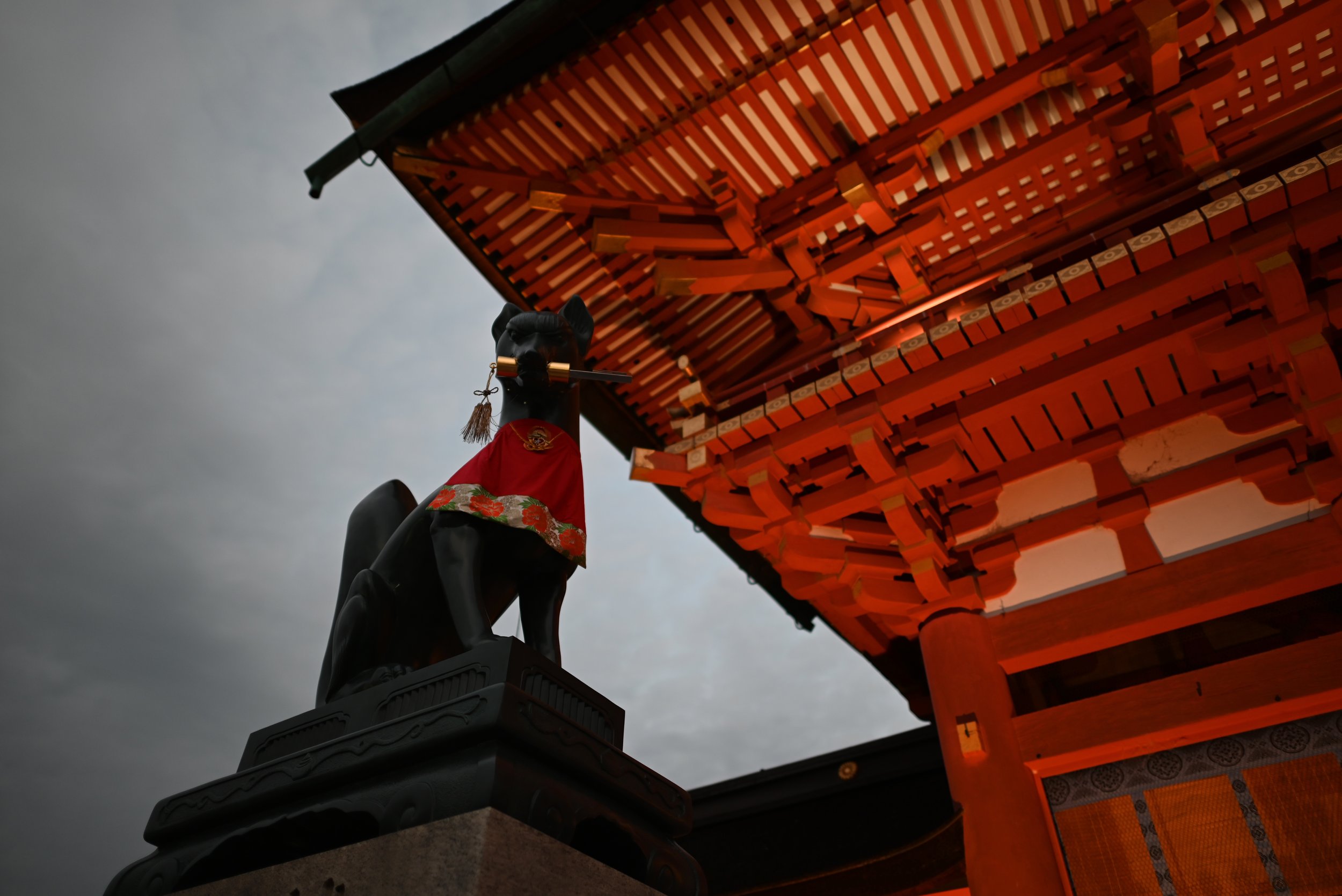
In Japanese mythology, foxes, or kitsune, are legendary creatures with paranormal abilities. This is a fox statue at the entrance to Fushimi Inari, a shrine with thousands of bright orange tori gates.
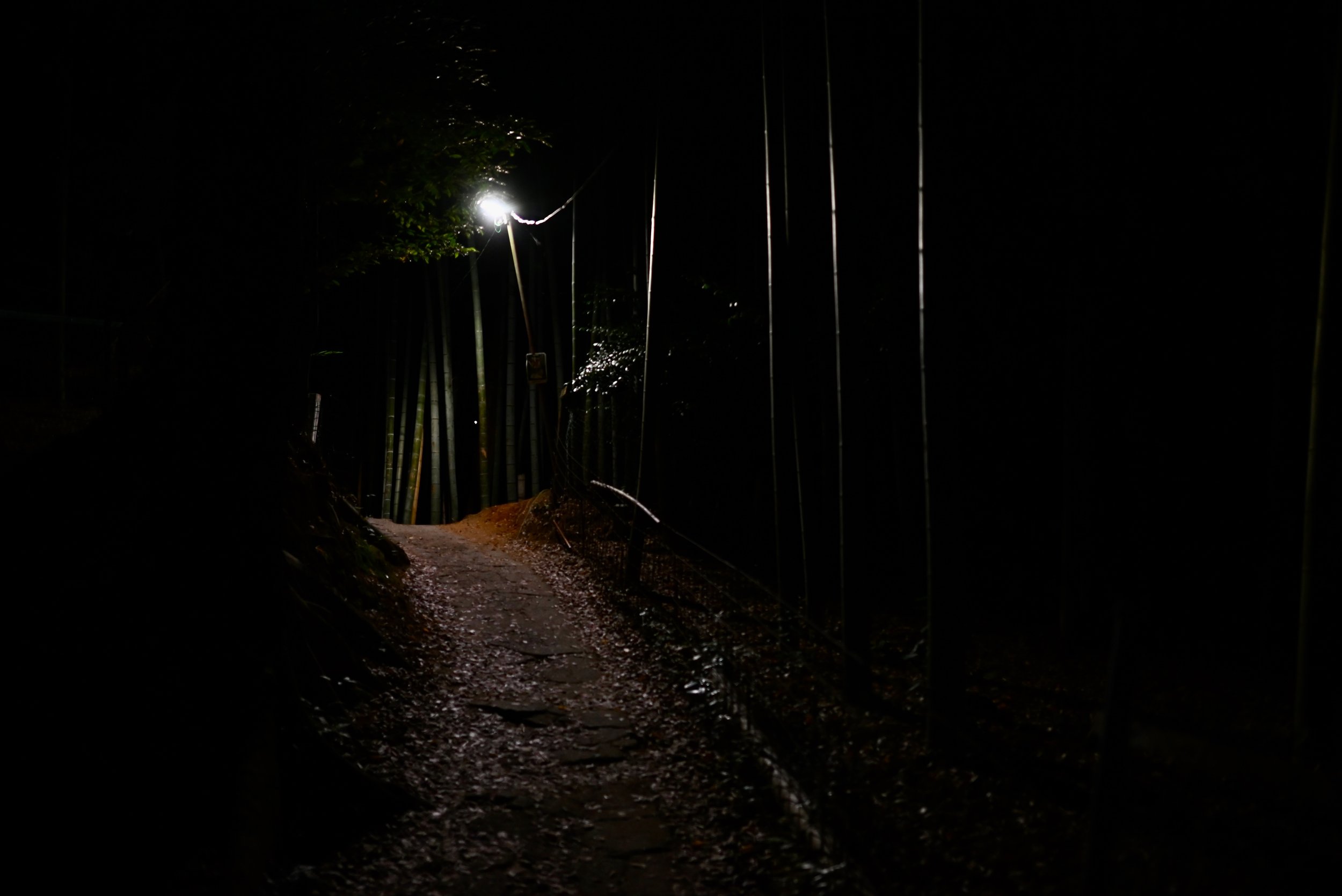
The bamboo forest in Kyoto at night.
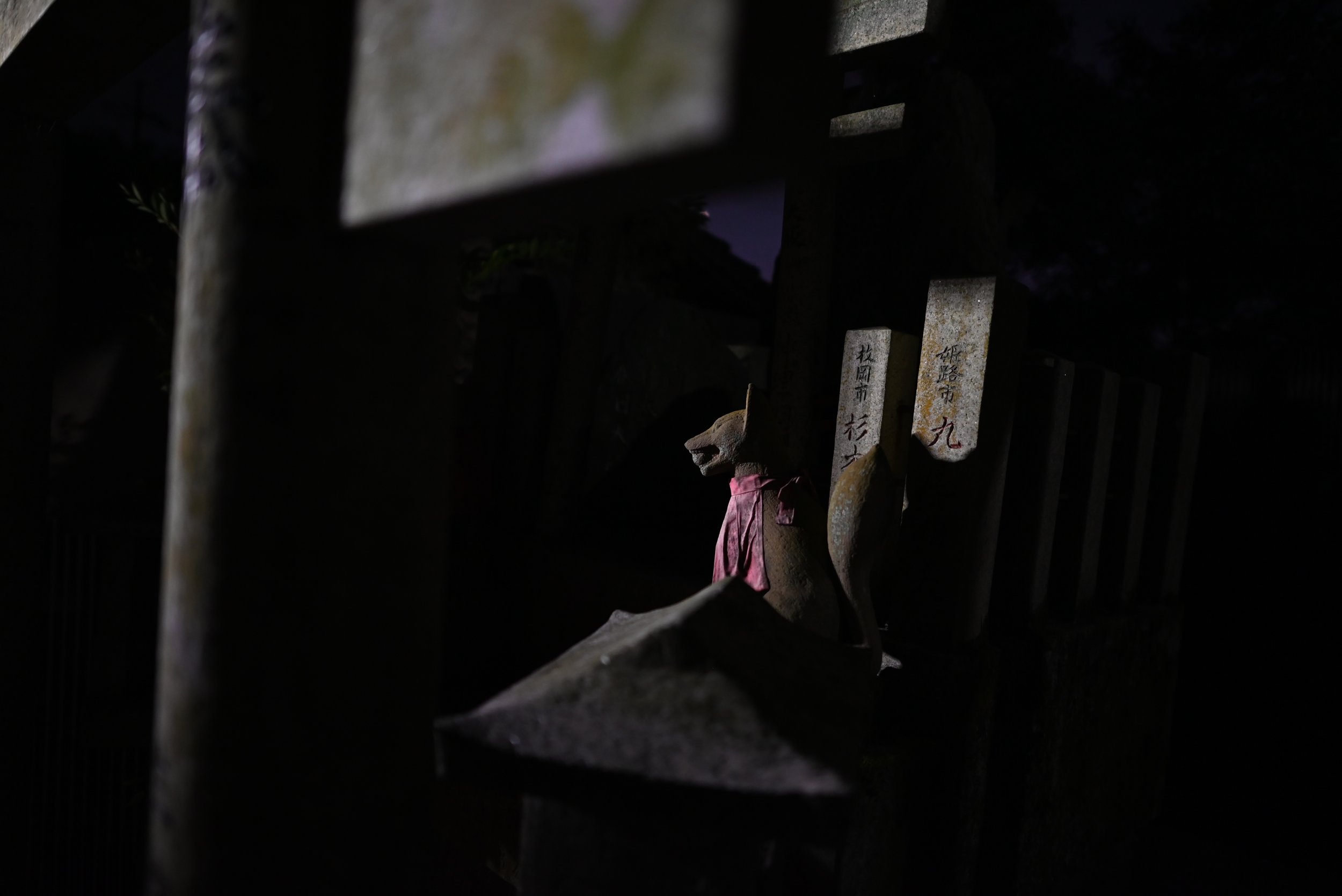
A fox statue amongst stone tori gates at a shrine near the Fushimi Inari gates of Kyoto.
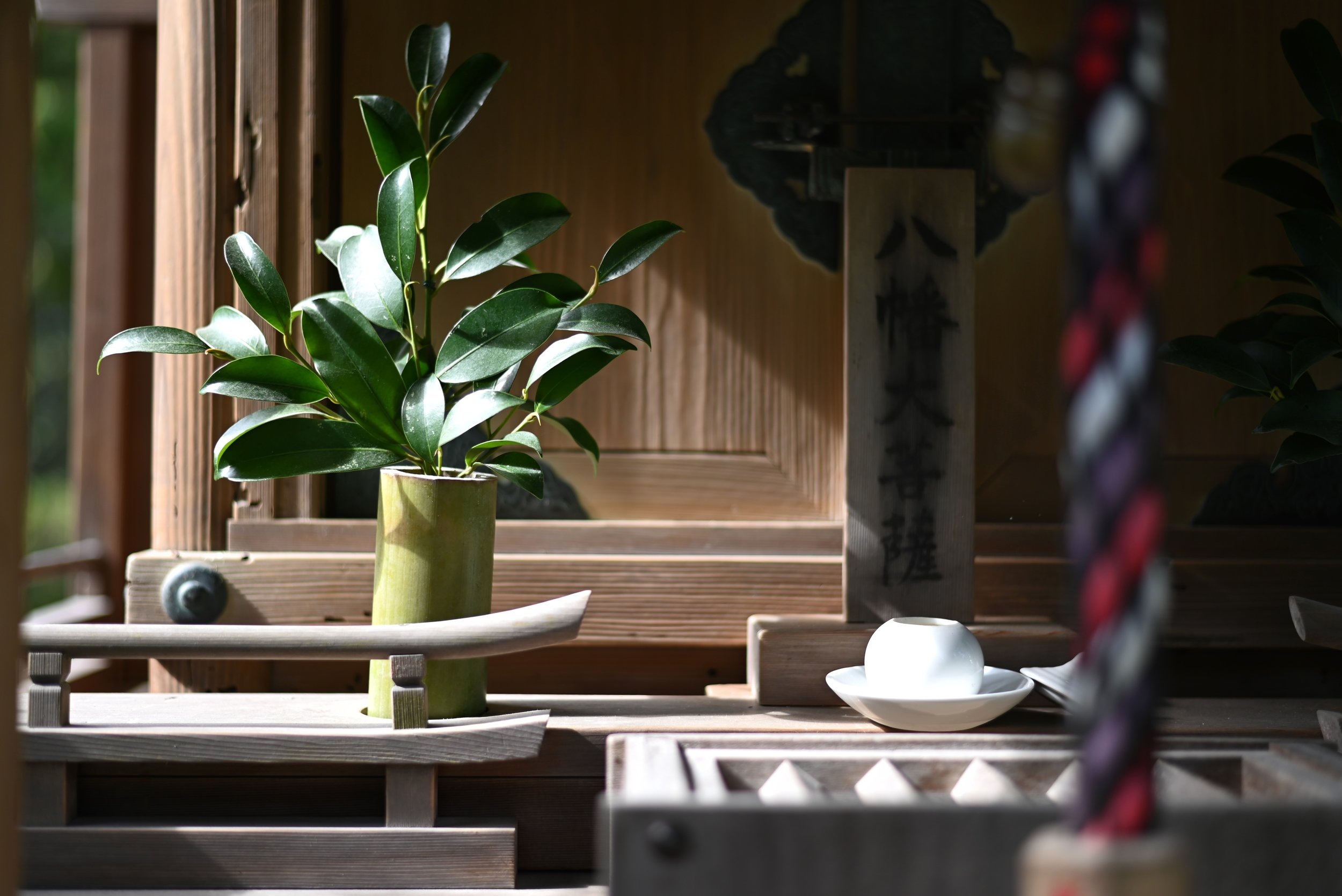
Votive offerings at Ginkakuji, the silver temple, in Kyoto.

Gardens at Ginkakuji, the silver temple, in Kyoto.
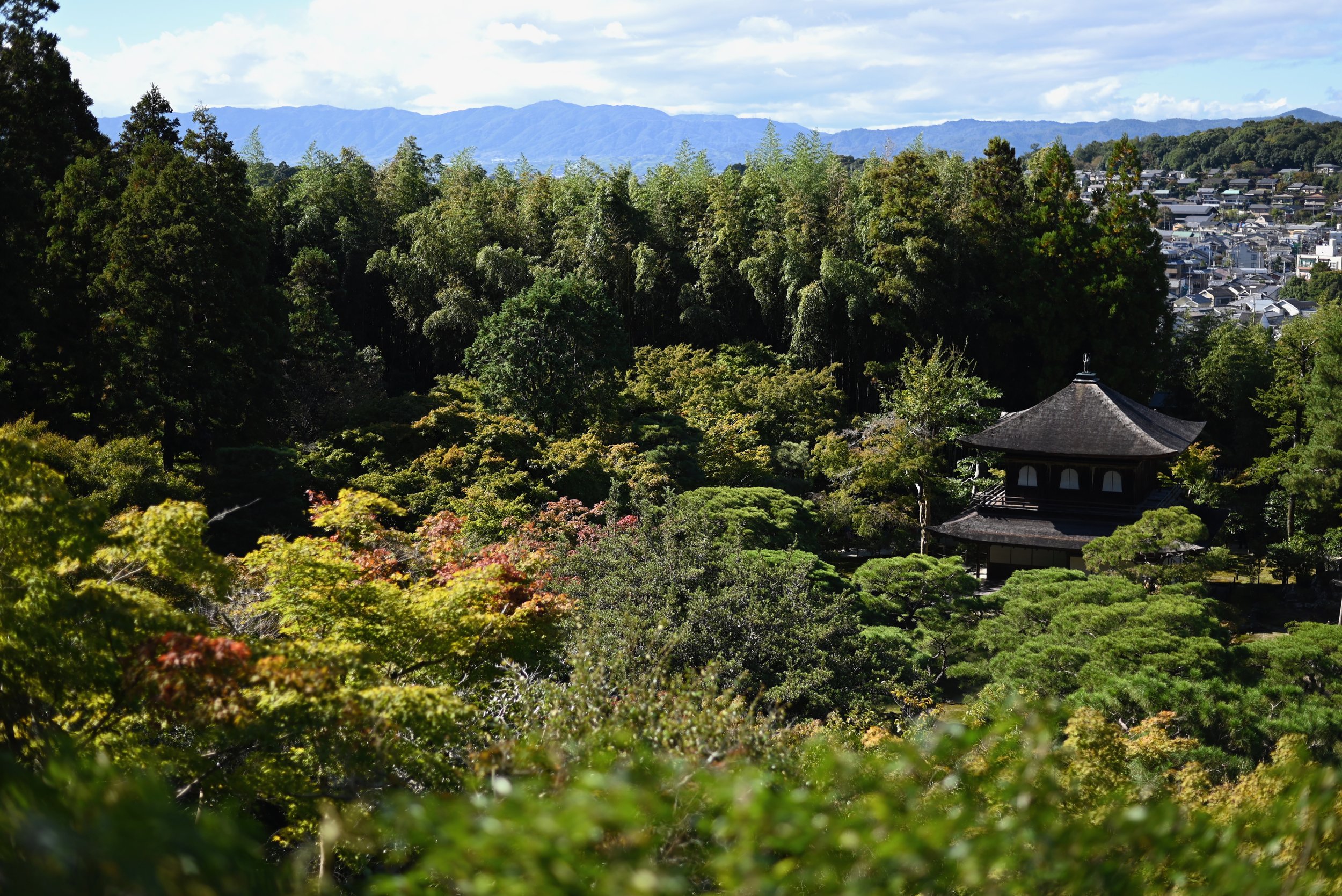
Ginkakuji, the silver temple, in Kyoto.
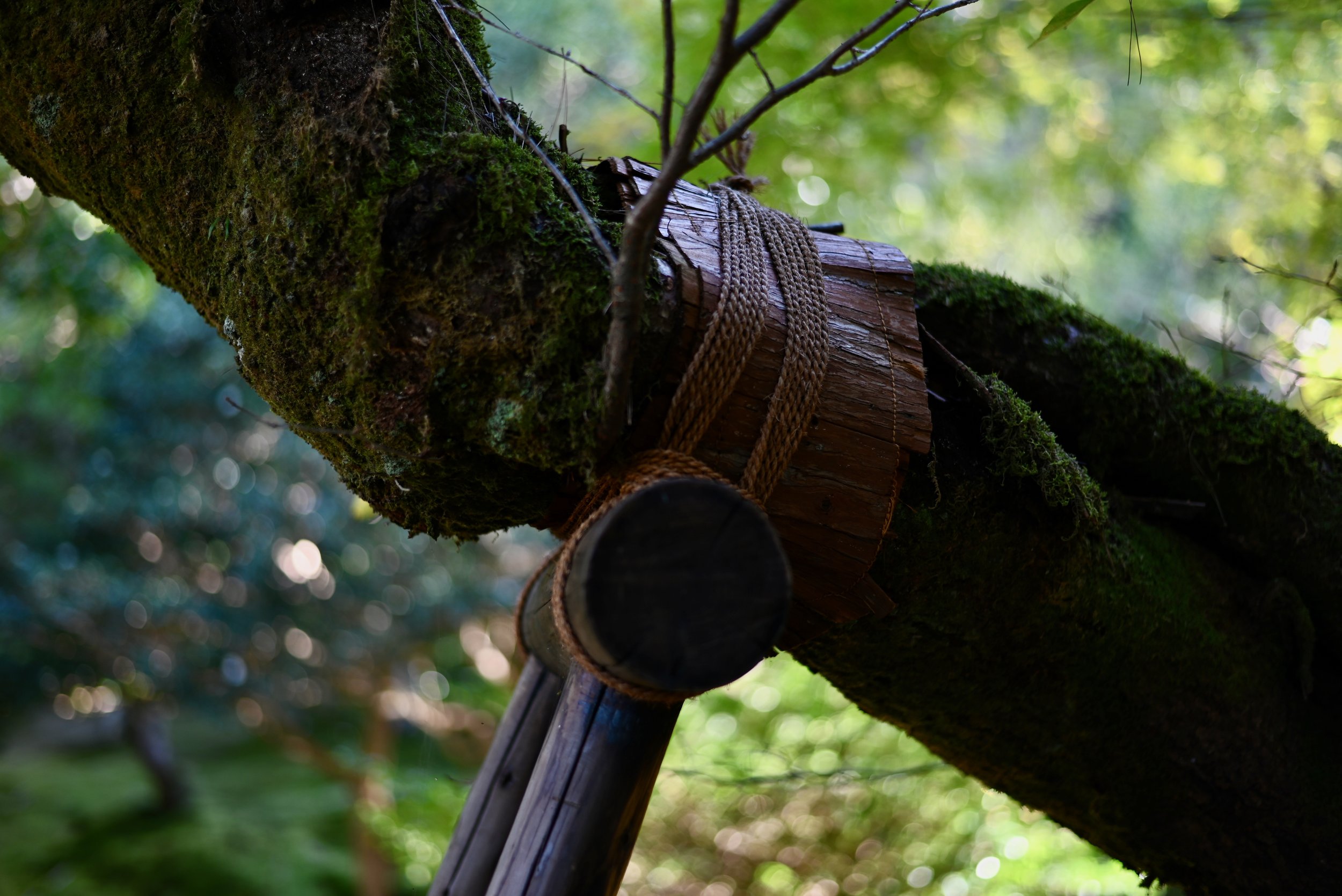
A support, which allows tree growth to extend far beyond the base. Branches are protected from rope marks by wood covers wrapped around the girth of the branch.
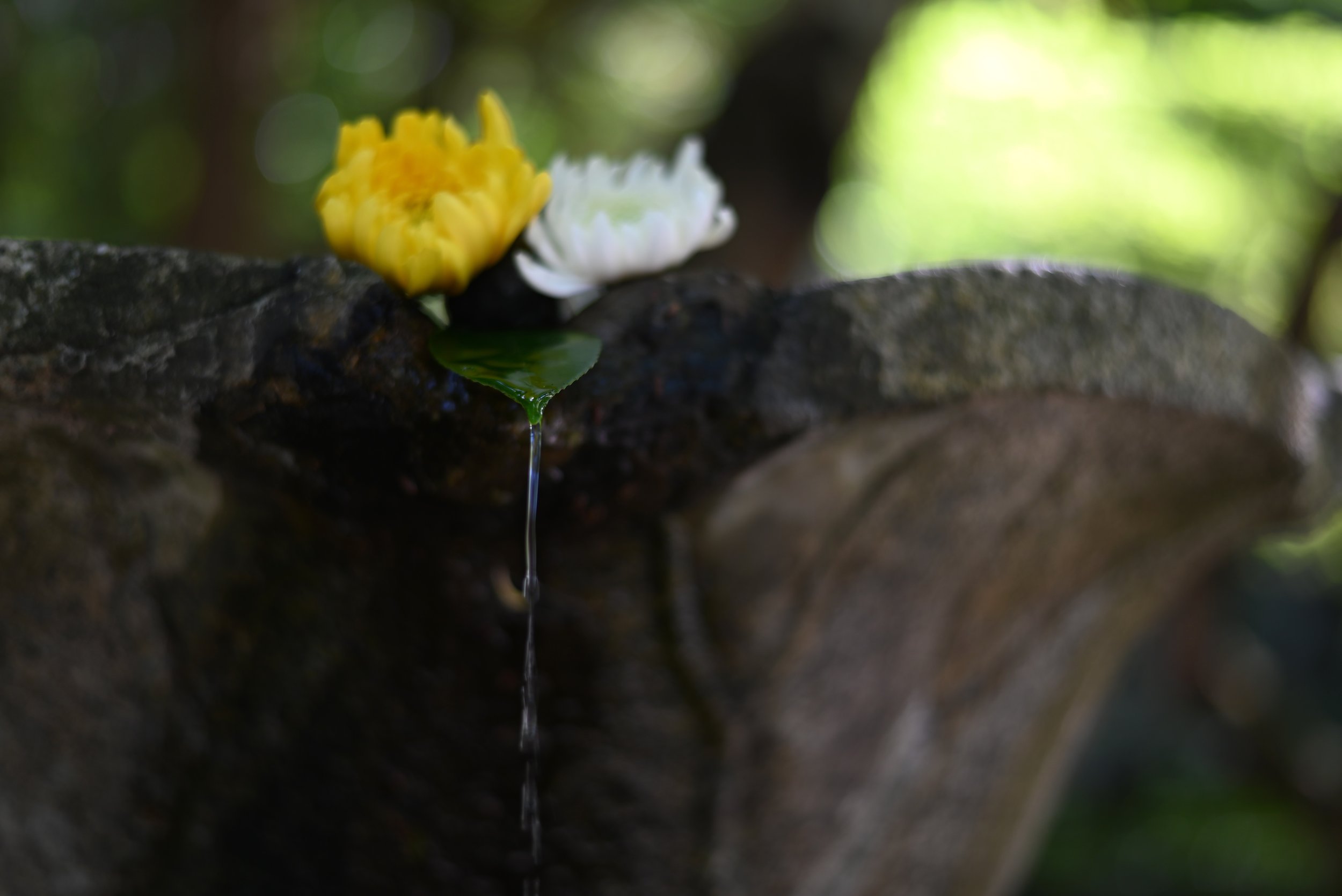
A pretty arrangement at the Hōnenin Temple in Kyoto.

Flower bushes outside of a temple in Kyoto (unfortunately, I can’t remember which one).
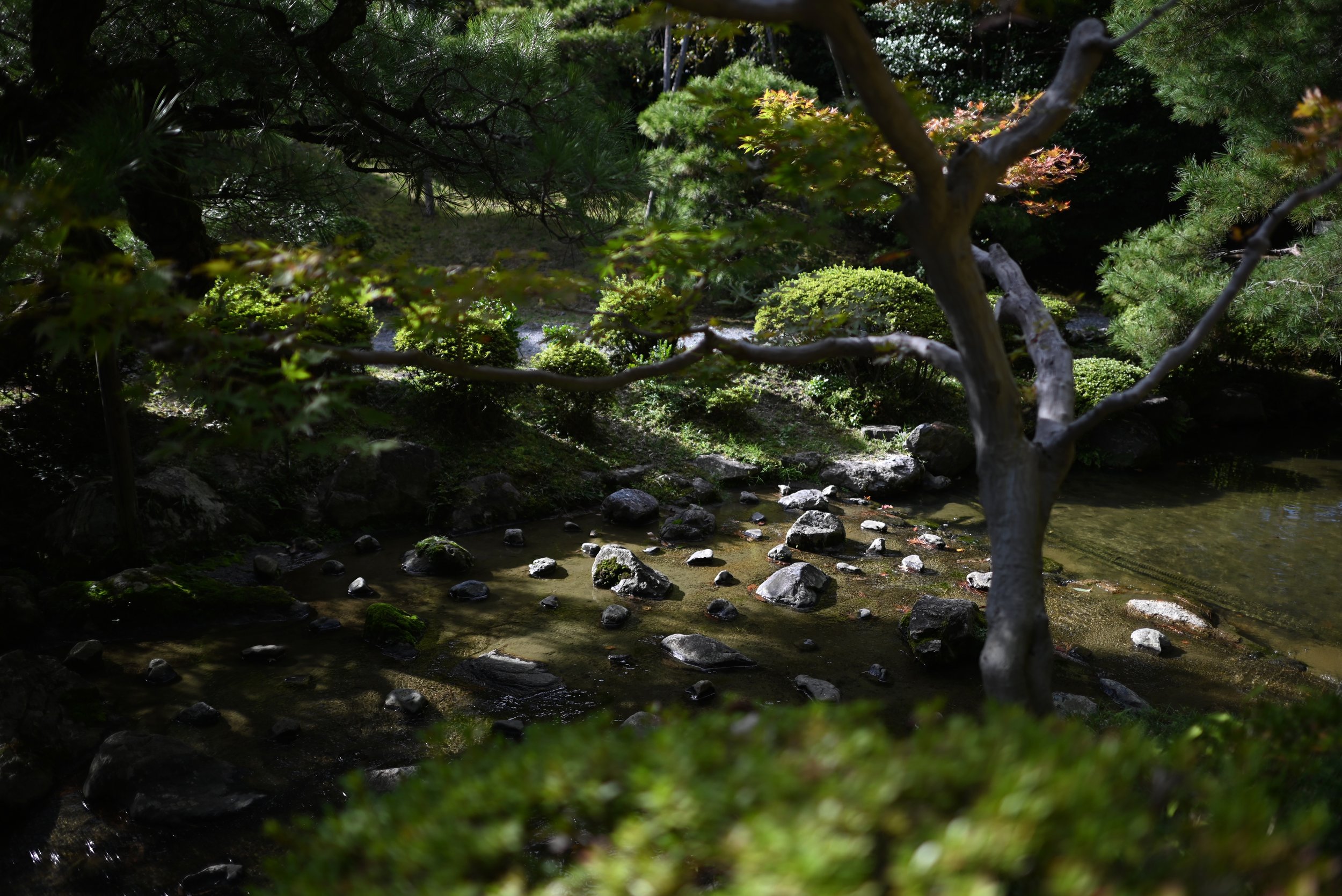
Gardens in Heian Jingu, a Shinto shrine in Kyoto.
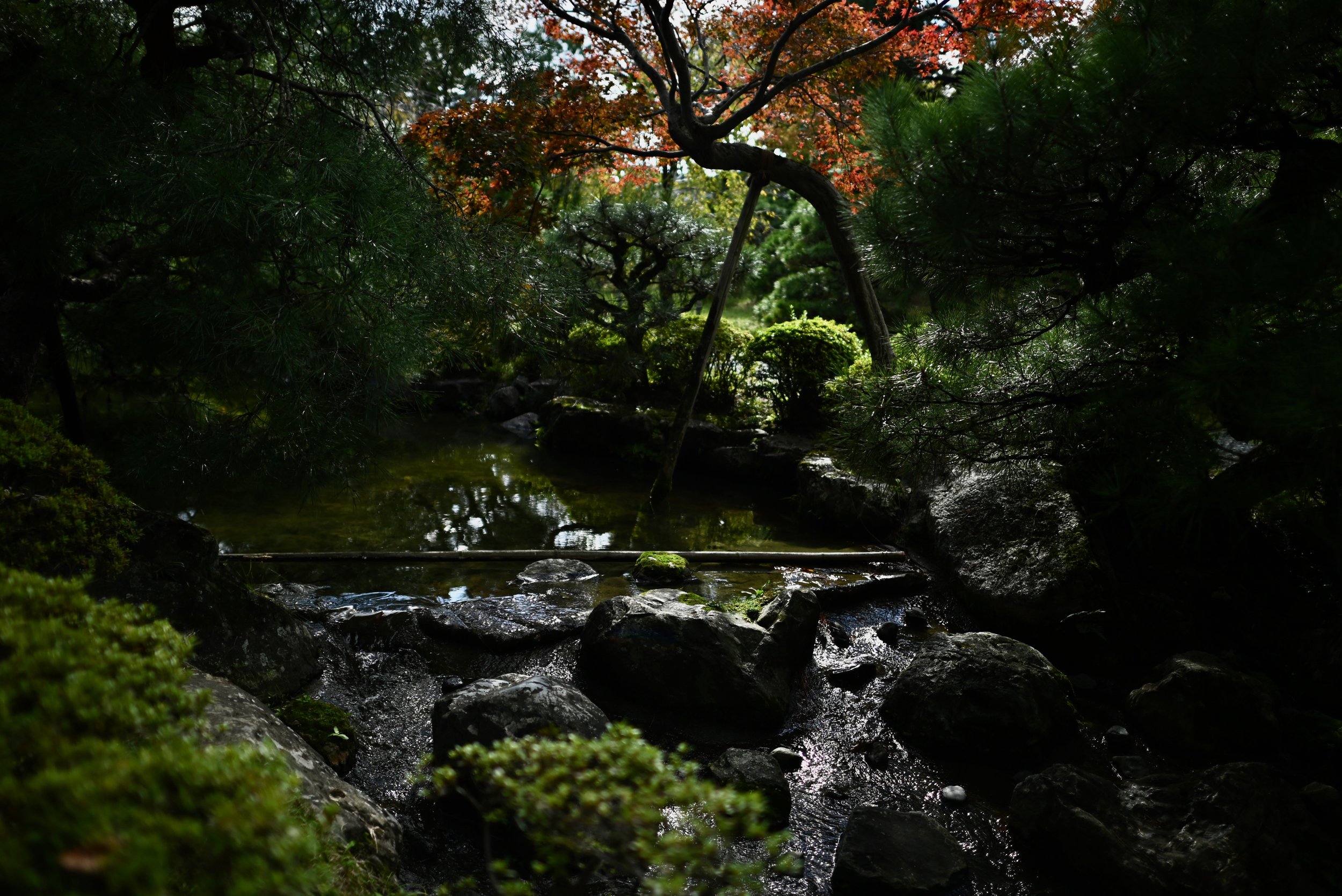
Gardens in Heian Jingu, a Shinto shrine in Kyoto.
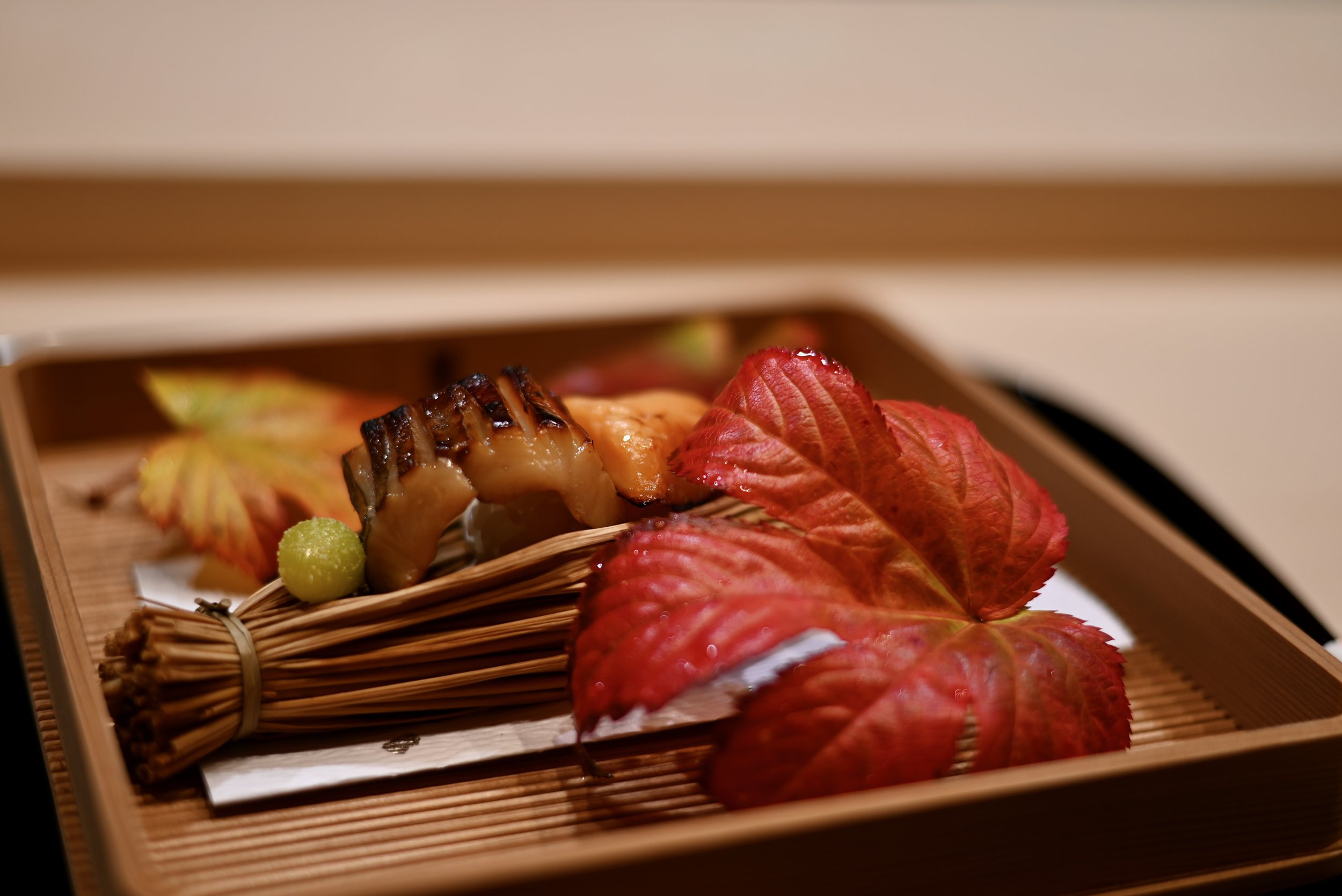
Charcoal grilled salmon with miso at Gion Fukushi, a kaiseki restaurant in Kyoto.
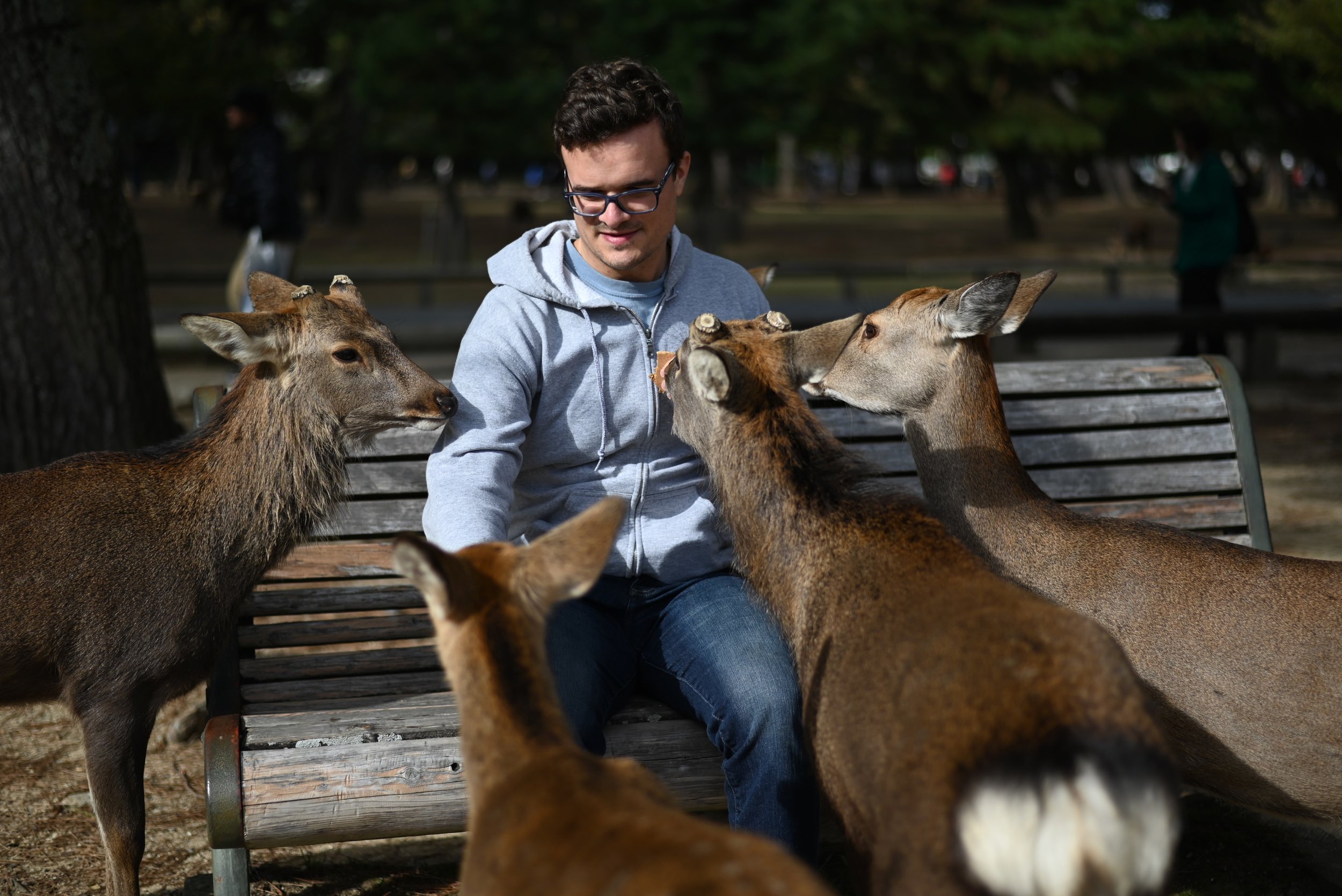
Joe feeding deer at the wild deer park in Nara, Japan.




























